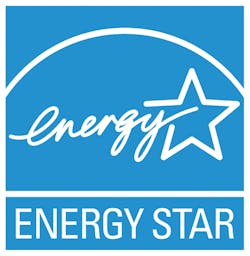On July 8, 2016, the Environmental Protection Agency (EPA) finalized an ENERGY STAR specification adding commercial coffee brewers to the program. Coffee brewers are found in nearly every commercial establishment, from office buildings to hotels. The strict new energy efficiency requirements these products will have to meet to earn the ENERGY STAR will provide significant energy savings to users and reduce greenhouse gas emissions.
Click here for Commercial Coffee Brewers Specification Version 1.0.
Commercial coffee brewers are available in many different types, configurations and sizes. Depending on the establishment, the usage patterns can vary greatly. In general, commercial coffee brewers are characterized into three main types: single-cup brewers, batch brewers, and urn/satellite brewers. The new ENERGY STAR specification focuses on coffee brewers intended for commercial use and excludes coffee makers used in households. While initially focusing on batch commercial coffee brewers, EPA expects to expand the scope of this specification to include other types of commercial coffee brewers once information about their energy use becomes available.
ENERGY STAR performance requirements for coffee brewers highlight the most energy efficient products in a variety of configurations and sizes that meet the needs of various users. In addition to meeting energy performance requirements, some ENERGY STAR certified commercial coffee brewers include features like “energy save” mode. Manufacturers must share extensive information regarding the features and the energy use of their certified products, enabling purchasers to find the product that best meets their performance and efficiency needs.
Commercial coffee brewers that earn the ENERGY STAR will offer end users as much as 35% in energy savings and about $100 per year when compared to conventional models. If all eligible commercial coffee brewers sold in the United States were ENERGY STAR certified, the energy cost savings would grow to more than $41 million each year, and more than 700 million pounds of annual greenhouse gas emissions would be prevented, equivalent to the emissions from nearly 70,000 vehicles.
To earn the ENERGY STAR label, products must be certified by an EPA-recognized third party, based on testing in an EPA-recognized laboratory. In addition, manufacturers of the products must participate in verification testing programs run by recognized certification bodies.
ENERGY STAR is the simple choice for energy efficiency. For nearly 25 years, people across America have looked to EPA’s ENERGY STAR program for guidance on how to save energy, save money, and protect the environment. Behind each blue label is a product, building, or home that is independently certified to use less energy and cause fewer of the emissions that contribute to climate change. Today, ENERGY STAR is the most widely recognized symbol for energy efficiency in the world, helping families and businesses save $362 billion on utility bills, while reducing greenhouse gas emissions by 2.4 billion metric tons since 1992. Join the millions who are already making a difference at energystar.gov.





